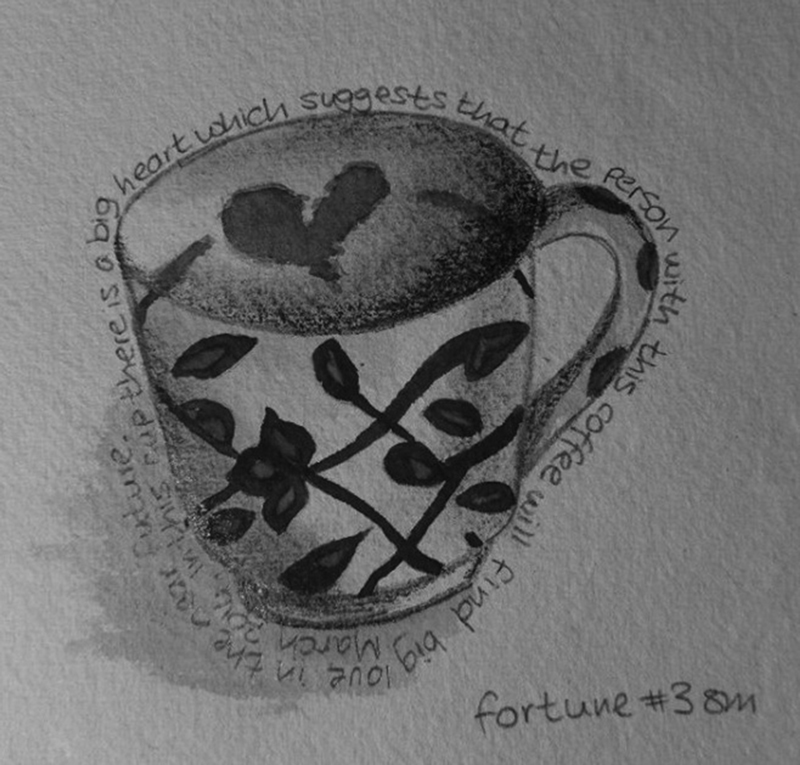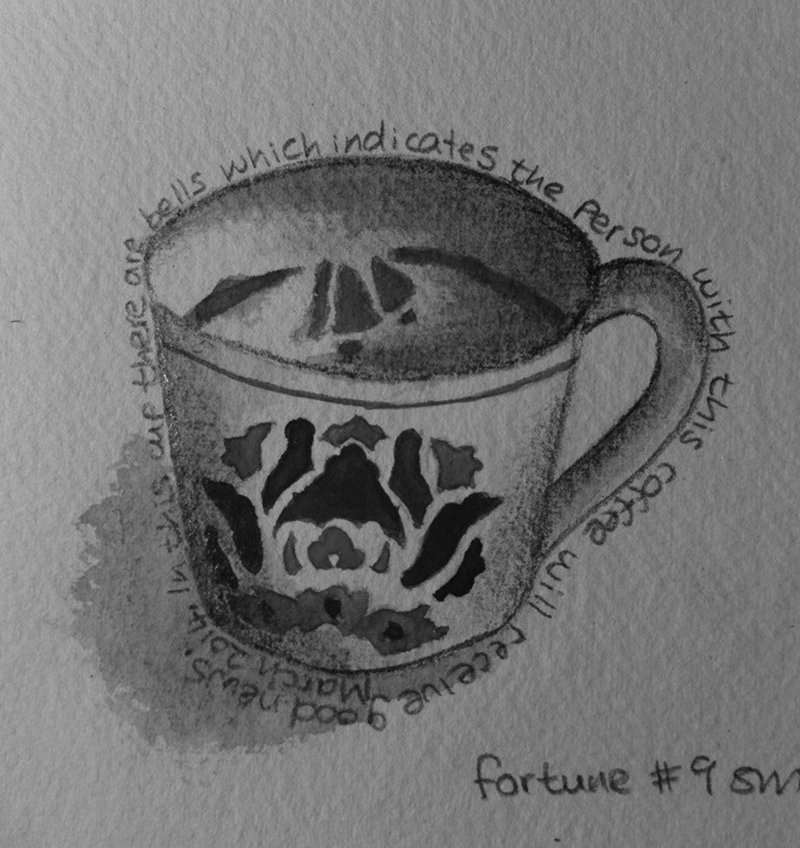In Turkey a falcı, or fortune teller, is often versed in the ancient art of coffee reading. Before I came to Istanbul I had never heard of anyone reading coffee grindings; although when I was a child my grandmother used to read the tea leaves that remained clinging to the inside a cup of tea after drinking it. This was in the days before teabags became more commonplace, and this small piece of social culture slipped away into insignificance.

Unquestionably, coffee has great import in Turkey. Turkish coffee has a long and distinguished history, going back to the early seventeenth century. The making of coffee in its present-day form is said to have originated here – on its passage from Yemen to Europe, where the beans were chewed, and in other parts of the Middle East where whole beans were boiled. The coffeehouse is essentially an innovation of the Ottoman Empire, first introduced in Istanbul to create a stable commercial market for coffee amongst Arab merchants.
Traditionally, a Turkish woman is considered marriageable when she can make a good cup of foamy coffee for her husband to be. As a practical joke the woman puts salt in the coffee she makes for her potential husband when both families first meet, which is when he officially asks for her hand in marriage. After lunch a strong black tea or Turkish coffee is considered an essential digestive. After so many years in Turkey I too feel that the meal is incomplete without this dénouement. Naturally, I have had plenty of opportunities in the last seven years to witness the reading of the cup.
There seems to be a range of different practices when it comes to the actual reading. I can only document the ones I know although if you have your fortune read through the medium of coffee you may encounter something substantially different. But all seem to agree that once you have finished drinking your coffee you must turn the cup upside down onto the saucer. Some give great significance to the direction of the handle or insist that you must turn the cup once or twice to seal the fortune. Many put metal onto the base of the cup, a coin or ring is common, to draw out the heat to help the cup cool down.
The first rule is that you cannot read your own fortune, so it is customary for friends to read each other’s cups. The shapes in the grounds are studied and a meaning assigned. There is a range of common interpretations for certain symbols; such as the tree which is related to family. The symbols around a main image are also assimilated into the reading. Some state that with the handle facing away from you the left-hand side represents the past, the middle of the cup the present and the right-hand side the future. Others simply read the cup as a whole for future predictions. There is general agreement that as something at the bottom of your cup is further away you will have to wait for it or maybe it is even something inaccessible. Symbols around the rim show an event that will happen soon. If the left-over coffee spills onto the outside of the cup this is considered lucky. After the main reading the saucer must also be studied. When placed at an angle, if the grounds are fluid enough to move it indicates that everything in your cup will come true. The reader may also see symbols in the saucer.

Being from a design background I became fascinated by the images in my cups; many of which look like abstract pieces of art. I started to take photographs of them and the idea first sparked that this could be an interesting art project. I made a few individual fal paintings as presents for friends, and the positive reaction I received made the concept of a whole series inevitable. I created ten fortunes; delicate Turkish cups carefully marked out in water colours on hand-made paper. I kept each fortune related to good luck to create a positive ambiance. For the last five years or so I have been heavily involved in learning technologies which made producing something tactile all the more momentous. The full series once complete was displayed for a month in Molly’s Café which briefly stood in the historical Galata area of Istanbul. Like many artists who have gone before and in all certainty those who will come after it is hard not to be inspired by Turkish culture and in particular the dynamic and vibrant city of Istanbul.
